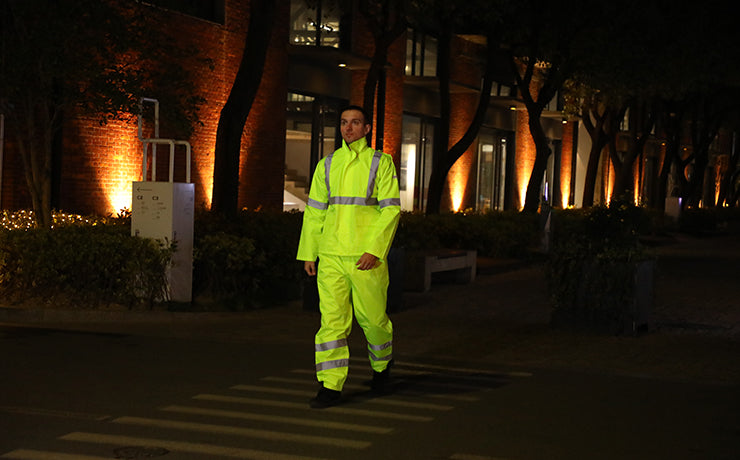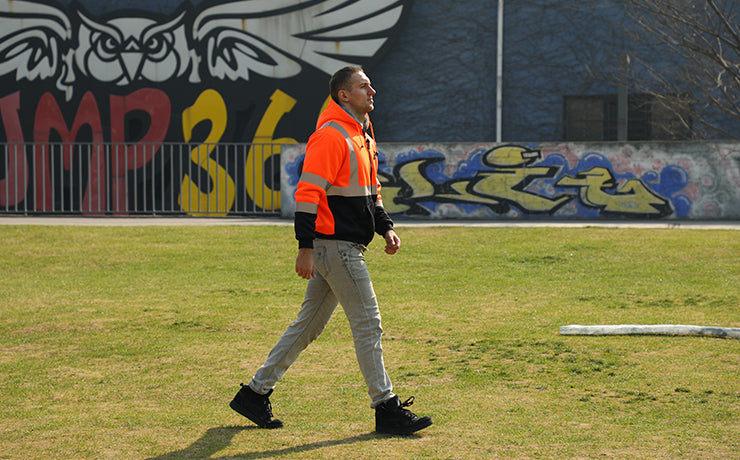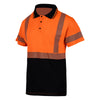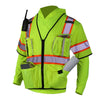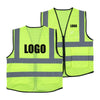How To Print A Custom Logo On Safety Vest? Introduction To The Advantages And Disadvantages Of Five Common Printing Processes
When customizing group reflective clothes and work safety clothes, you will face a variety of printing process choices. Each printing process has its applicable scenarios, as well as different advantages and disadvantages. Different printing processes should be used according to the fabric of the reflective clothing, the complexity of the pattern, and the number of colors of the pattern. This article will introduce several common printing processes for your reference.
-
Screen printing

Screen printing is a process that uses screen printing. It uses the basic principle that the mesh of the screen printing plate is transparent to ink, and the mesh of the non-image part is not transparent to ink.
Screen printing can be printed on the surface of various materials. Screen printing has the characteristics of large printing area, bright colors, and clear layers. The printing has no obvious glue feeling, and it also has the advantages of water resistance, sun resistance, and wash resistance.
The disadvantage is that complex patterns such as gradient, ink splashing, and tie-dyeing cannot be screen printed. It is generally suitable for large-area patterns of no more than six colors, and the construction period is long. It needs to be published, printed, and dried, and it usually takes 3-5 days to complete.
-
Thermal sublimation

Thermal sublimation is a transfer printing technology that transfers the color pattern on the pattern draft to the reflective clothing through high temperature. The pattern penetrates into the hi vis clothes, has no glue feeling, and feels good. Any pattern can be printed using this process. It has high water fastness and will not fade.
The disadvantage is that it is limited to fabrics. Pure cotton and dark clothes cannot be made with this process(like black safety vests). It can only be made of white quick-drying, modal, imitation cotton and other fabrics. The construction period is very short and can be shipped in 1-2 days.
-
Thermal transfer hot stamping

Thermal transfer is a process that uses a thermal transfer machine for printing. First, the pattern is printed on a PET film coated with a release agent. After drying, this film with patterns is hot-stamped on the surface of clothes or other fabrics through high temperature and high pressure, leaving the pattern, tearing off the waste film, and completing the hot stamping process. This method is called "hot stamping", also called "thermal transfer hot stamping".
Basically, all reflective clothes and all patterns can be processed by this process, and high-precision character photos and 3D game animation patterns with multiple colors, rich layers, and delicate tones can be printed. The finished product will be very close to the design draft, with small color difference and beautiful color.
The disadvantage is that the cost is high, the printing position will have a gluey feeling,The flatness of the clothes during hot stamping will also affect the final effect, and printing large pictures will affect the breathability of the clothes. The printing period is 1-2 days.
-
Embroidery

Embroidery is a process of embroidery using an embroidery machine. It can be embroidered on the surface of most reflective clothes, but it is not recommended to embroider too thin clothes, which may cause the clothes to deform.
The embroidery is very strong, the pattern is concave and convex, and the three-dimensional sense is very strong, but the cost is high, the limitations are large, and the construction period is long. It usually takes 4-5 days to complete. Patterns with complex colors such as gradient, ink splashing, and tie-dyeing cannot be processed by this process.
-
Digital direct printing

Digital direct printing is a process of printing using a digital printer. The digital printer directly prints the pattern you need on various materials, that is, the pattern to be printed is set by the computer, and the machine sprays it.
Digital direct printing uses inkjet printing, and the pigment enters the fabric when it is formed, breaking the limitations of general screen printing color overprinting and sudden color printing. Any picture can be printed.
The ink particles of digital printing are extremely fine, reaching the nanometer level, so they can easily penetrate into the fiber gaps of the fabric. They are both fast and do not affect the softness and comfort of the fabric itself. It can be printed on the surface of various materials, and the feel is the best when used on HI VIS Shirts.
Digital printing has the characteristics of fast printing speed, good printing effect, and water resistance. It also has the advantages of high flexibility and strong variability. It is suitable for small batches, personalized customization and other work clothes orders. However, the cost is high, and the pattern is not as fine as hot stamping. Non-white clothes need to be sprayed with a layer of white base material for digital direct printing, which will slightly affect the feel and take 2-4 days.
Wholesale customization can reduce costs
The last suggestion is that if you want a low-cost and effective custom logo, it is best to print it on the fabric before the garment is finished. This usually happens when purchasing reflective clothing in large quantities. Because the logo printed on the finished clothing is often not washable enough and easy to fall off.

Conclusion
The above are the five common printing processes. If you want to wholesale reflective clothing or customize your logo, you can contact FONIRRA by email. As a factory with 30,000 square kilometers and decades of suppliers, we will provide you with detailed technical answers. Whether it is reflective clothing production or post-product transportation, we can even help you make your logo and product photography.


